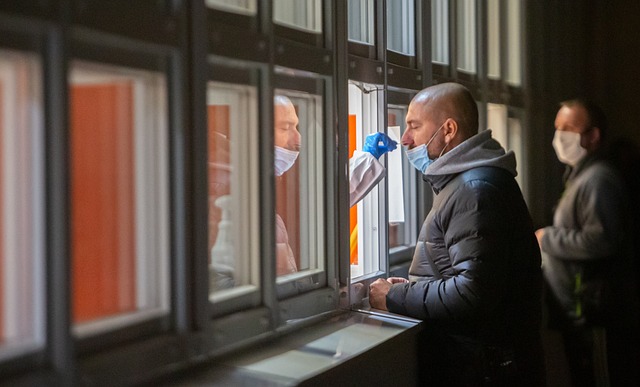In healthcare, rigorous background checks, including medical license verification and thorough medical background verification, are essential to ensure patient safety. These processes go beyond hiring, verifying qualifications, work history, and any unethical practices of healthcare professionals. By cross-referencing records, validating licenses, and scrutinizing credentials, organizations can mitigate risks associated with incompetent or malicious practitioners. Patient safety checks maintain high care standards, restore public trust, and ultimately enhance the quality of patient care. Comprehensive background checks involve verifying educational credentials, licenses, criminal history, previous employment, and disciplinary records using automated data validation and regular updates on industry databases.
In today’s digital era, ensuring competent care necessitates rigorous healthcare background screening. As patient safety remains paramount, understanding the importance of thorough medical background verification is crucial. This article delves into the key components that constitute effective healthcare professional screening, emphasizing the integral role of patient safety checks in credentialed healthcare worker selection. We explore best practices for conducting healthcare employment screening and license verification to safeguard patients and strengthen healthcare systems.
- Understanding the Importance of Healthcare Background Screening
- Key Components of Effective Medical Background Verification
- The Role of Patient Safety Checks in Credentialed Healthcare Worker Selection
- Best Practices for Conducting Healthcare Employment Screening and License Verification
Understanding the Importance of Healthcare Background Screening

In the intricate world of healthcare, where lives are entrusted to professionals, ensuring competent care is paramount. Background checks for healthcare professionals, also known as healthcare professional screening and medical background verification, play a pivotal role in upholding patient safety. These rigorous processes extend beyond mere employment screening to encompass verifying healthcare worker credentials, including licensing, certifications, and educational qualifications. By conducting thorough medical license verification, organizations can mitigate risks associated with incompetent or unethical practitioners, thereby enhancing the overall quality of care.
Patient safety checks are not just a regulatory requirement but a moral obligation. Healthcare employment screening helps in identifying potential red flags that may have been overlooked during initial hiring processes. It safeguards patients by ensuring that those providing direct care possess valid and current credentials, maintain good standing with relevant medical boards, and do not have a history of misconduct or malpractice. This multifaceted approach to healthcare worker credentials is essential for maintaining the integrity of the profession and fostering public trust.
Key Components of Effective Medical Background Verification

Effective medical background verification is a multifaceted process that ensures patient safety and maintains the integrity of the healthcare system. The key components include comprehensive data collection, robust verification methods, and meticulous record-keeping. Healthcare professional screening begins with gathering detailed information from various sources, such as licensing boards, previous employers, and educational institutions. This data should encompass the individual’s medical qualifications, work history, disciplinary actions, and any relevant legal issues.
Once collected, this information is rigorously verified to ensure its accuracy and authenticity. Medical background verification involves cross-referencing records, comparing dates of employment and education, and validating licenses and certifications. Healthcare worker credentials must be thoroughly scrutinized to detect any discrepancies or potential red flags that could compromise patient care. Patient safety checks are paramount, ensuring that healthcare professionals meet the required standards and regulations before they are permitted to provide treatment.
The Role of Patient Safety Checks in Credentialed Healthcare Worker Selection

Patient safety is paramount in healthcare, and ensuring competent care starts with verifying the credentials and qualifications of every healthcare worker. Medical background verification, including thorough background checks for healthcare professionals, plays a crucial role in mitigating risks and protecting patient welfare. These checks extend beyond simple education and licensing to encompass criminal history, previous employment verifications, and any disciplinary actions or malpractice claims.
Implementing robust healthcare worker credentials screening process through medical license verification and patient safety checks allows institutions to make informed decisions when selecting personnel. This proactive approach helps to prevent potential harm, maintain high standards of care, and foster a culture of trust and accountability within the healthcare setting.
Best Practices for Conducting Healthcare Employment Screening and License Verification

Conducting thorough and effective background checks for healthcare professionals is paramount to maintaining patient safety and upholding ethical standards. Best practices in healthcare employment screening involve a multi-faceted approach that goes beyond simple resume reviews. Organizations should implement robust processes for medical background verification, encompassing comprehensive checks of educational credentials, professional licenses, and any prior discipline or legal issues. This includes verifying certifications from recognized medical boards and regulatory bodies to ensure healthcare workers meet all necessary qualifications.
Additionally, leveraging technology for automated data validation and cross-referencing can streamline the screening process while enhancing accuracy. Regular updates on industry-specific databases and watchlists are essential to capture any changes in healthcare worker status. By integrating these best practices, institutions can confidently verify the credentials of their staff, minimizing risks associated with incompetent care. This meticulous approach to medical license verification ensures that only qualified and trustworthy individuals gain access to sensitive patient information and critical care settings.














